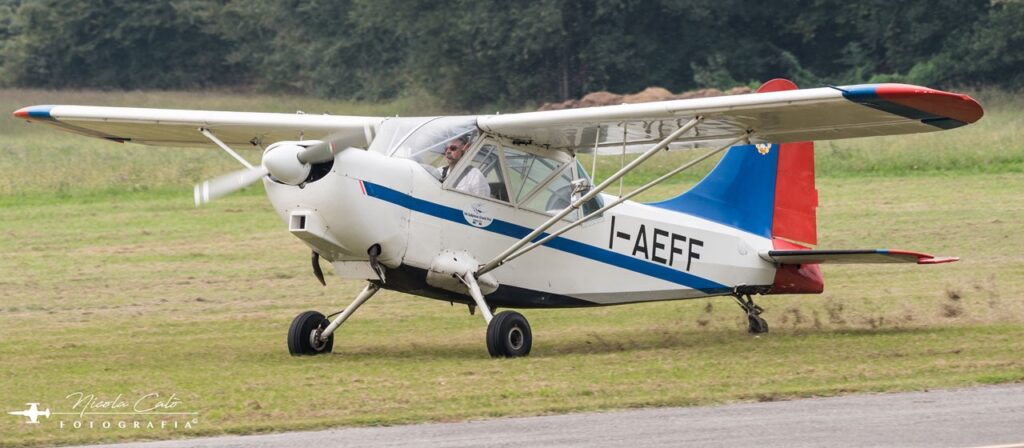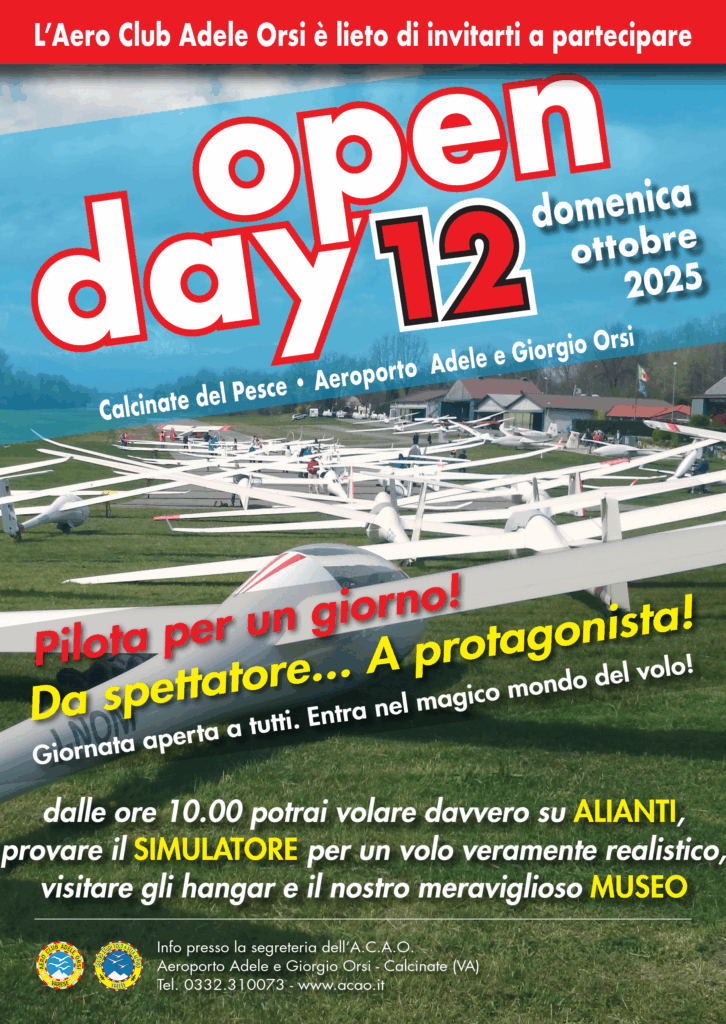
Data sheet
Number of places: 2
Length: 7.33 m
Wingspan: 10.37 m
Wing area 14.4 m2
Empty weight: 668 kg
Maximum takeoff weight: 980 kg
Engine: 235 hp Lycoming O-435-1
VNE: 265 km/h (143 kn)
Cruising speed: 190 km/h (100 kn)
Stall speed: 70 km/h (38 kn)
Tangency: 4820 m
Stinson L5 I-AEFF
The Stinson L-5 Sentinel is a single-engine, high-wing aircraft produced by the U.S. Stinson Aircraft Corporation during World War II, employed in the conflict by the U.S. Army with air liaison and reconnaissance functions.
It is a simple and robust aircraft with two tandem seats and a mixed metal-wood-frame structure, suitable for operating on short, unprepared runways. After the war, a few dozen L5s were used until 1953 for basic training at the Air Force Schools; the last examples, which had been decommissioned by the Air Force, were given to the Aeroclub d’Italia. Even today, after nearly 80 years of history, the Stinson L5 is still considered one of the best airplanes to perform the tough task of towing gliders, due to its great maneuverability and robustness combined with considerable engine power.
I-AEFF has a variable pitch propeller and received its civil markings on Oct. 1, 1954, in the 1970s it was converted by Gonalba workshops to the “Super Stinson” standard by adopting the 235hp Lycoming O-540 in place of the original 190hp O-435, and has been operating at Calcinate as a trainer aircraft for about 30 years.
